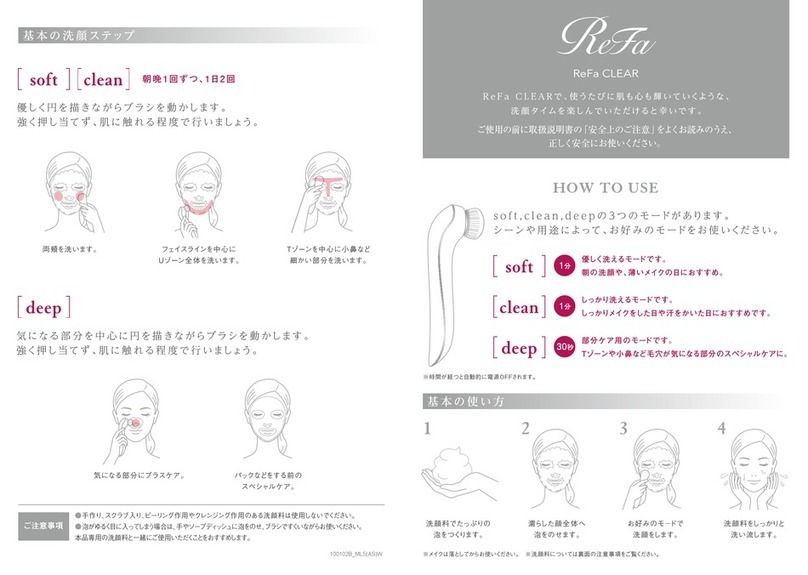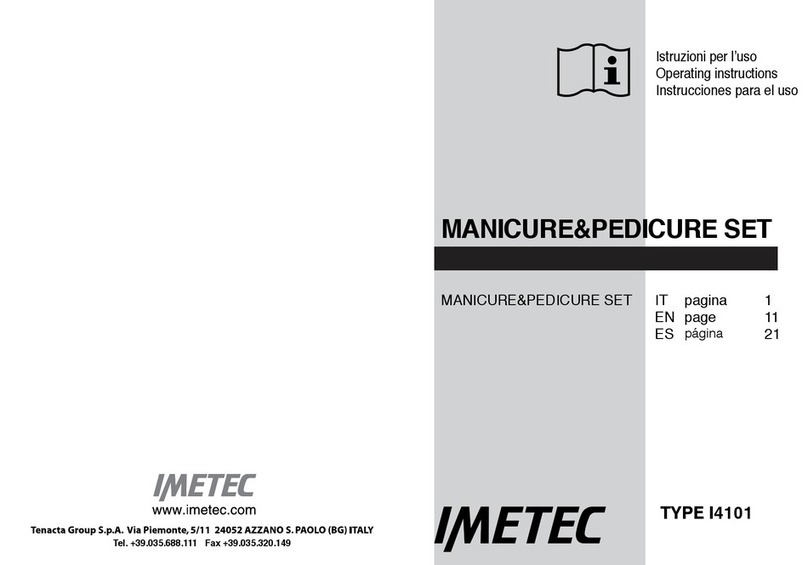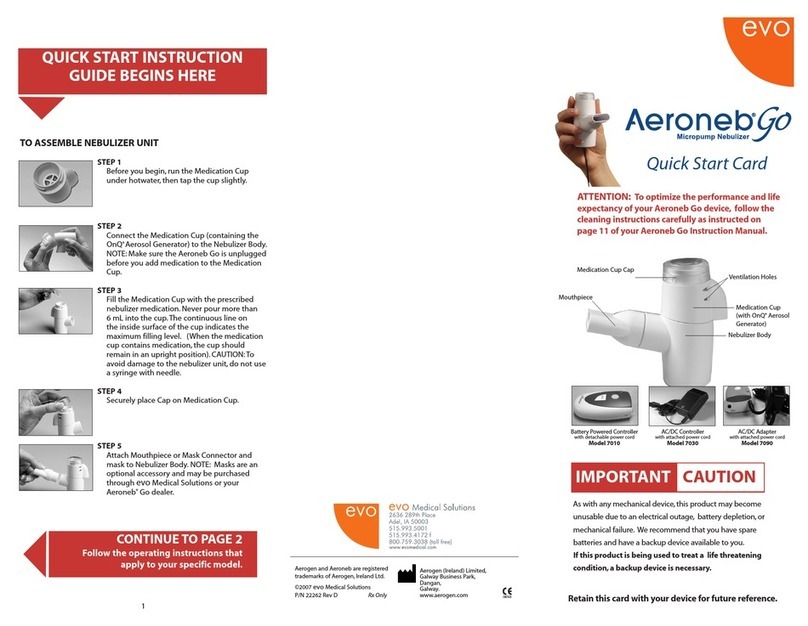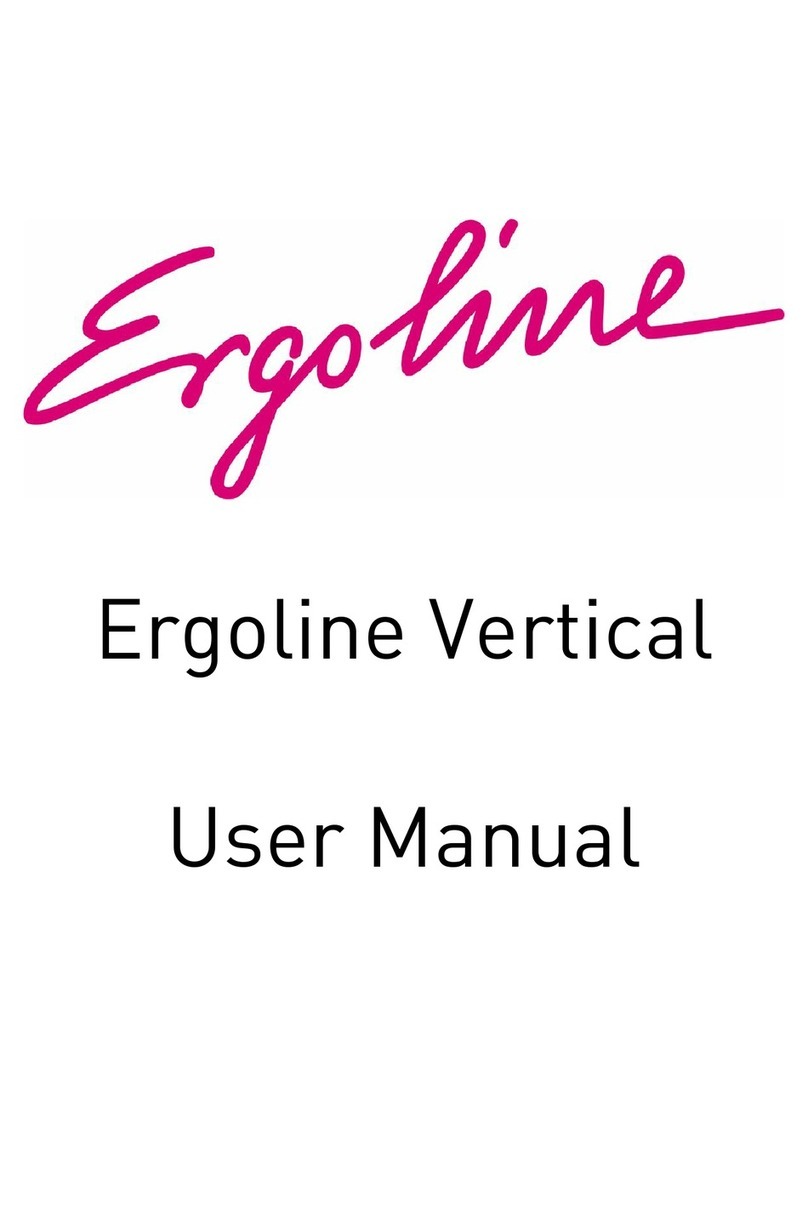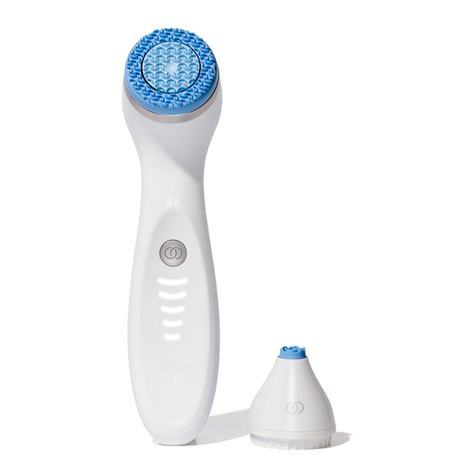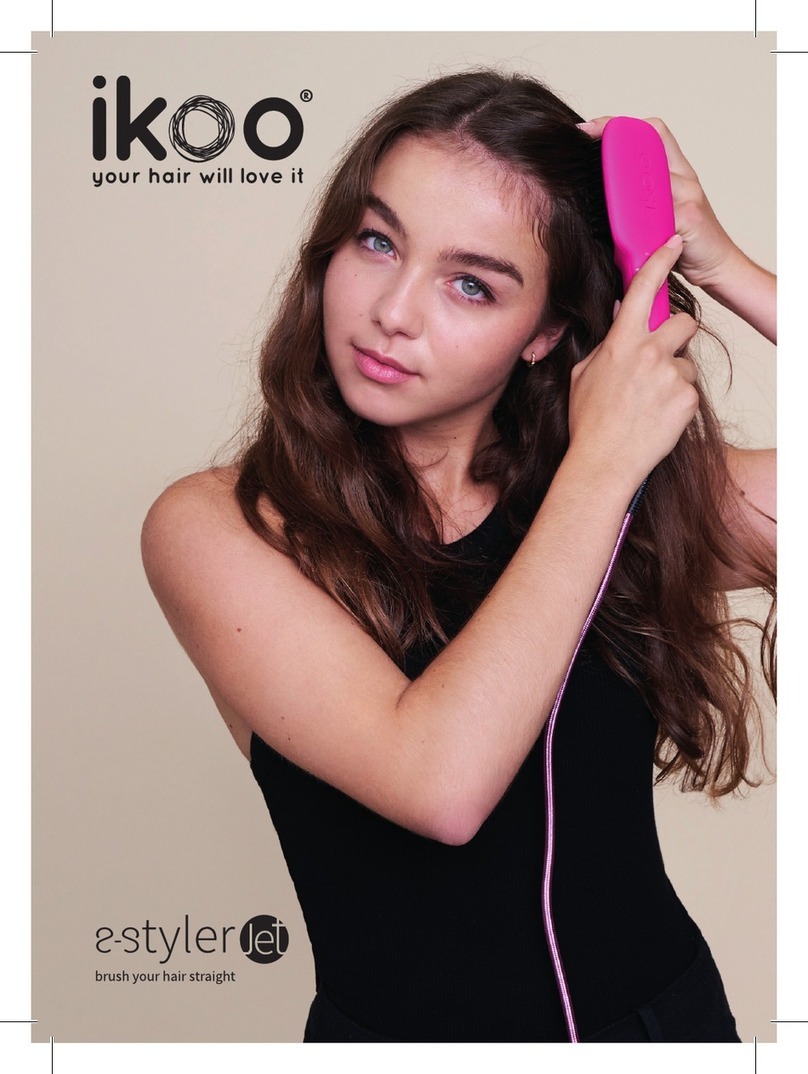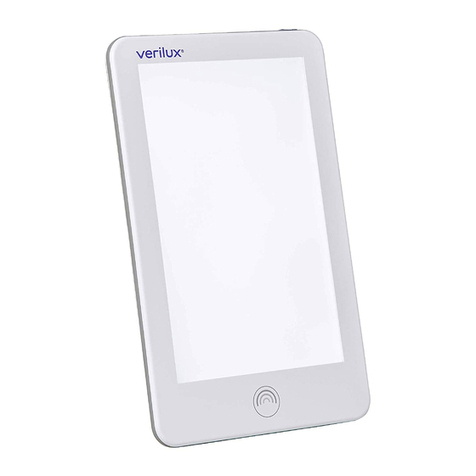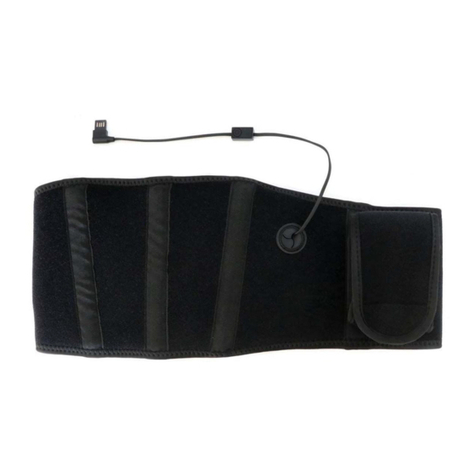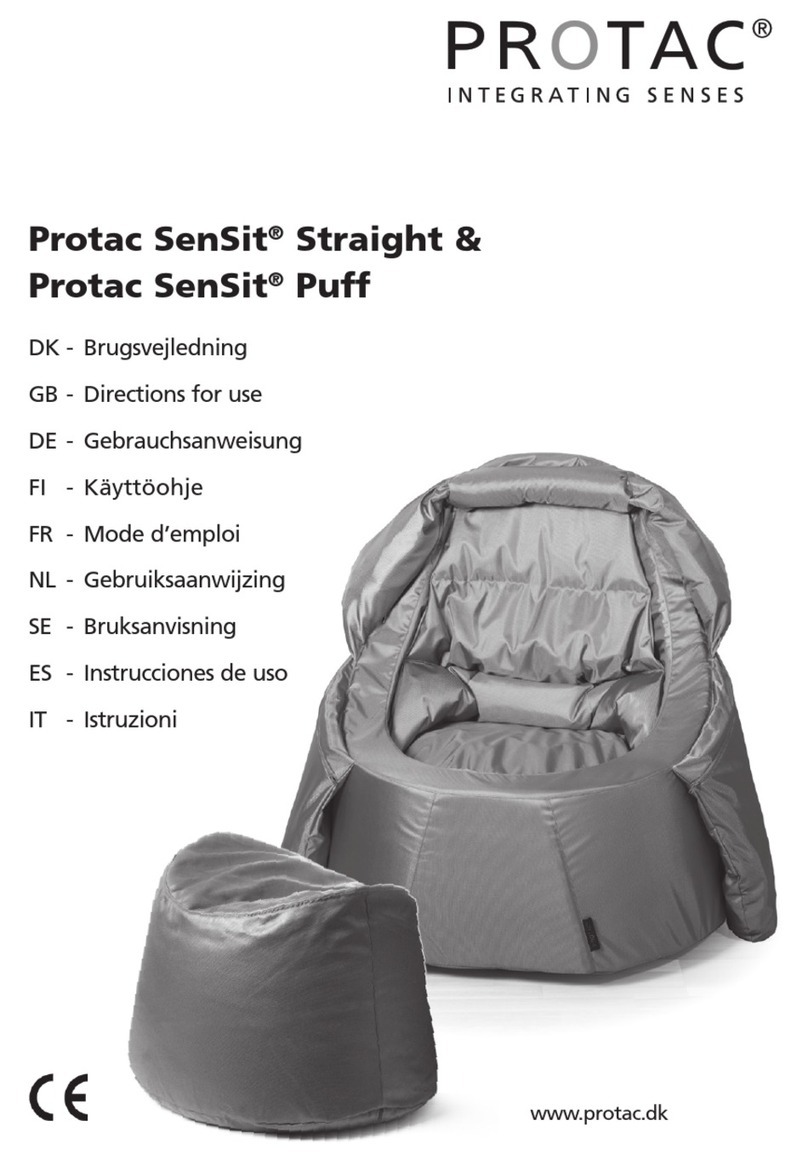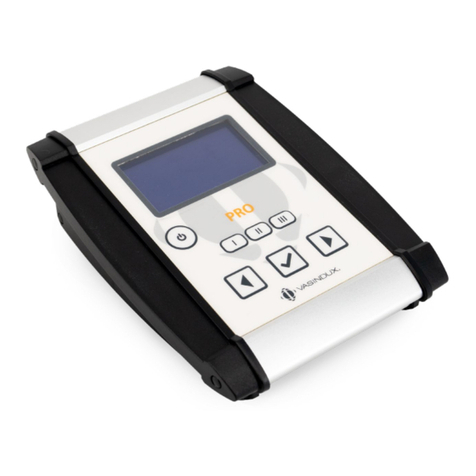Rn faces Skin classic User manual

Skin Classic for Minor Skin Irregularities
E manual
Dear Fellow Skin Care Professional,
Congratulations on your purchase of the Skin Classic. You will no doubt
find this unit to assist nearly every one of your clients achieves the goal
of more beautiful skin. The Skin Classic is a high frequency device
utilizing direct high frequency to enable quick, precise treatments of
minor skin irregularities. As in any aesthetic procedure, the treatment
goal is aesthetic improvement not perfection. Typical one treatment is
necessary however results may vary. You will find that the added value
to your treatments will put you in high demand and recurring services
will increase. So go ahead and set your practice apart, you will love the
results!
Distribution and training exclusively by RN FACES 719.859.0707

Power requirements: 105-125 volts, 60 Hz, 3/4 Amperes
Complete Purchase Package:
Foot pedal, probe holder, 120 probes : F6, F12, and TAG, disposal box,
40 page e manual, laminated chair side guide. The system comes with
one on one training in your facility. Also included is the Dermlite
DL100!
Condition of Sale
The Skin Classic is sold only to qualified skin care professionals. The
Skin Classic is lonely to treat Minor Skin Irregularities in the epidermis.
RN FACES does not have any control by which the skin care professional
treats clients. We at RN FACES have explained the nature of all
treatment procedures including risks and inherent dangers.
Improper use, including intensity levels beyond those recommended or
for an excessive duration may result in bodily injury to clients or to the
operator.
Electrical Specifications
Active output: Continuous adjustable from a minimum of 25 volts P-P to
a maximum of 110 volts P-P measured into a 1500 ohm load.
Output frequency: 13.560 MHz crystal controlled
Leakage current: Meets specification of UL 544 for patient connected
devices.

FDAProductClassificationDatabase
Device Class 1
Device High Frequency Epilator
Product Code KCW
RegulationNumber 878.5350
Warranty
RN FACES will warrant the Skin Classic for a period of 3 years. We
warrant the Skin Classic to be free of defects in workmanship for this
period of time. A serial # is assigned to every Skin Classic and kept on
file. The warranty is non-transferable. In the event you Skin Classic need
technical assistance, RN FACES will ship the owner a replacement unit
until original unit is serviced.
Ongoing Support
Simply: email stephanie@rnfaces.com, text 7198590707 or
even Skype: stephanie.holvick. We always expect questions along
the way so do not hesitate to call upon us.
Disclaimer: As with any new procedure or device that a skin care
professional wishes to use...check with your governing board to insure
that you will be working within scope of practice. As board opinions may
change always check yourself. Do not depend on others when it comes to
your livelihood.
Installation and Care of Skin Classic
https://youtu.be/bG3pXSWaCWY
Puttingtheprobeintotheprobeholder
https://youtu.be/Yn72GS1dvqU

What is DermLite
The DermLite line of devices enables the trained eye to detect skin cancer and other
types of skin conditions early. Every DermLite includes a magnification lens, light-
emitting diode (LED) lighting, and most have polarizing filters for glare reduction.
These polarizing filters eliminate the need for skin contact and the required liquids,
allowing a much quicker, more convenient examination.
DermLite is Portable.
Contrary to the vast majority of other devices for skin lesion diagnosis, DermLite is
designed to be small enough so that you can easily take it anywhere you need to go.
DermLite is Efficient.
With the elimination of immersion fluids, there is no setup required. The
inconveniences of immersion fluids are a thing of the past. You'll work quicker,
allowing you to screen more lesions on more patients than ever before. Plus,
DermLite LEDs last much longer, use a lot less energy and are white and brighter
than ancient bulbs used in other devices.
DermLite is the Future.
Entire classes of dermatology residents are using DermLite as their skin cancer
detection tool of choice for its portability, efficiency and convenience. Make
DermLite a part of your future today.
The Dermlite has made the "mole check" of any patient visit a trip to a museum. Nevi
have become works of art. And for a non-gadget person, how easy to use. The design
makes intuitive sense. I even got the batteries in without looking at the directions! :-)
Personally, I like the "non medical instrument" look and feel of it. And then when you
hand it to a patient to look at their own lentigo or nevus it is as if you gave them a VW
bug to drive, but with a 300 HP motor. A big surprise. What fun.
This counts as the "esthetic" evaluation... I am sure other [doctors] will evaluate
otherparameters."
Dr. Diane Thaler / Dermatologist / Madison, Wisconsin

Trouble Shooting your DermLite 1100
No Light: Replace or recharge the battery according to the model
and check again.
Weak light: Replace the battery with a new battery; you have
approximately 30 minutes of battery life remaining before the unit will
not function.
Light Flickers: Remove the battery and check the metal contacts for dirt,
dust or damage. Wipe off any dust and reinsert the battery. If there are
signs of corrosion, discard the battery and replace it with a new battery.
Should you still encounter flickering, please contact your local DermLite
dealer.
LED Fails: The LEDs used in the DermLite are designed to last over
100,000 hours. If any of the LEDs fail please contact RN FACES for repair.
Warranty
Your DermLite 1100 comes with a 5 year warranty. This does not
include damage from mishandling. Serial Number is located on the box.
Using your Dermlite...http://www.youtube.com/watch?v=TZnjyO-Zgs

Covered in this Section
Identifying Minor Skin Irregularities
Treatable Minor Skin Irregularities with the Skin Classic
Non treatable Minor Skin Irregularities (non scope)

Telangiectasia
Description with
Pictures Evaluation
Treatments
Prognosis

CHARACTERISTICS:
Telangiectasia are small dilated blood vessels near the surface of the skin or mucous
membranes, measuring between 0.5 and 1 millimeter in diameter. They can develop
anywhere on the body but are commonly seen on the face around the nose, cheeks, and
chin. They can also develop on the legs, specifically on the upper thigh, below the knee
joint, and around the ankles.
Acquired causes
Acquired telangiectasia, not related to other venous abnormalities, for example on the
face and trunk, can be caused by factors such as environmental damage such as that
caused by sun or cold exposure.
Trauma to skin such as contusions or surgical incisions.
Radiation exposure such as that experienced during radiotherapy for the treatment
of cancer.
Evaluation: History along with visualization are key elements in correctly
Identifying the facial capillaries. We are only treating in the cheek bulbs, chin and
nasolabial folds. NO treatment should take place in the lower extremities...
Treatments: Telangiectasia on the face are often treated with a laser. Laser therapy
uses a light beam that is pulsed onto the veins in order to seal them off, causing them to
dissolve. These light-based treatments require adequate heating of the veins. These
treatments can result in the destruction of sweat glands, the risk increases with the number
of treatments. Now with the advent of the SKIN CLASSIC skin care professionals can use this
high frequency technology to thermally vaporize these tiny capillaries with minimal impact
to the client, usually in one Rx, however in the case of many capillaries the client may
require a second treatment no sooner than 30 days (the skin healing cycle). The technique
calls for a F6 probe with an intensity (power) setting @ 10-20. A tap-1-2 cadence for each
touch over the capillary. Or saying 1-2-3. The entire length must be treated with the
technician looking for blanching while maintaining light contact along each point of the
vessel. Always consider the client’s comfort level, retracting after each treatment point.
Prognosis: The client is excellent. As per post treatment. Directions which include
Gentle cleansing of the area and 2x’s/day application of a sun block/moisturizer for
positive healing. No harsh products should be used until the skin is smooth and free of
redness. Clients will develop a crust, redden area, or even a furrow like track with in the
24-36 hrs, the crust or erythemic areas should shed within 7-10-14 days. Complete
healing takes 30 days. Concealer that is applied with a clean applicator can be gently used
over the affected areas 24hrs post treatment.

F A Q ‘s :
What will the client look like post treatment?
The client will appear erythemic (red with inflammation) over the area of treatment. This
redness should reduce within a few hours. The lower the Fitzpatrick scale (1 is a person
who is very pale and always will burn with sun exposure) the longer it make take for the
redness to subside.
2.What if the client returns with the same vessels present 30 days later?
This means the technician has not treated the area properly. Most likely did not hold the
tap a full 3 seconds. While treating, blanching usually occurs immediately, however
there needs to be enough high frequency over the capillary to effectively dehydrate.
There is a happy medium with time treating the irregularity.
3.What do I tell the client about recurring telangiectasia?
Remember that these minor skin irregularities will reoccur all of the clients’life. You must
educate them and let them know that when they start to see a few telangiectasia surface in
a few months to simply make an appointment to have them treated.
4. Why not treat the legs?
To effectively treat telangiectasia in the lower extremities the client must adhere to a very
strict regime after treatment. Such as compression garments, and not standing for long
periods. Most clients are not compliant and therefore clients are not satisfied. In my practice I
like to refer to a laser center that can also treat the purple, blue and green veins. Clients will
appreciate you being able to send them to someone who can treat all at one time!
Pictures courtesy of Winnie Kaspar LE

Cherry Angioma
Description with
Pictures Evaluation
Treatments
Prognosis
Cherry angiomas are made up of clusters of capillaries at the surface of the skin forming a
small round dome ("papule"), which may be flat topped. They range in color from bright
red to purple. When they first develop, they may be only a tenth of a millimeter in diameter
and almost flat, appearing as small red dots. However, they then usually grow to about one
or two millimeters across, and sometimes to a centimeter or more in diameter. As they
grow larger, they tend to expand in thickness, and may take on the raised and rounded
shape of a dome. Multiple adjoining angiomas are said to form a polypoid angioma.
Because
the blood vessels comprising an angioma are so close to the skin's surface, cherry
angiomas
may bleed profusely if they are injured. The SKIN CLASSIC will dehydrate the
tissue, and
discourage bleeding at the same time.

Cause
Cherry angiomas appear spontaneously in many people in middle age but can also, although
less common, occur in young people. They can also occur in an aggressive eruptive manner
in any age. The underlying cause for the development of cherry angiomas is not understood,
much because of a lack of interest in the subject. This is probably because they rarely are
caused by an internal malignancy.
Treatments
On the rare occasions that they require removal, traditionally cryosurgery or electro
surgery have been used. More recently pulsed dye laser or intense pulsed light (IPL)
treatment has also been used. The use of the Skin Classic simplifies the Rx of this
minor irregularity. The size of the probe (F12) is the key for causing the desired
effect without peripheral skin/cell damage due to the nature direct HF energy
specifically directed to the CA. A low power setting ( 20-30) combined with
inheritant moisture (blood) creates an excellent setting for local dessication of this
irregularity with the STATIC TAP METHOD, which is touching the CA just long
enough for a color change. Upon Rx of the entire cherry angioma, there will be a
crust similar to that of a picked pimple. This will shed in approximately 7-10 days.
The client is to use a moisturizing sun block after treatments.
Prognosis
In most clients, the number and size of cherry angiomas increases with advancing
age. They are harmless, except in very rare cases that involve a sudden appearance
of many angiomas, which can be a sign of a developing internal malignancy.
FAQ?
It doesn’t seem to change in color when I barely touch the skin. What am I doing wrong?
Typically you are just not actually touching the skin. Use your magnifiers to visualize the
probe touching the skin and be patient. Remember to hold. hold. hold.

Clogged Pores
Description with
pictures Evaluation
Treatments
Prognosis
Clogged pores, blackheads, and whiteheads clogged pores are an unsightly condition
that can cause acne. They occur when oil and sweat clog up the hair follicles and sweat
pores that are all over the skin. Clogged pore treatment is most common on the facial skin,
where they affect the physical appearance the most. Many different clogged pore
treatments are available.
Evaluation: Like all other minor irregularities, clogged pores require a through
cleansing, prior to checking the skin. Along with the patient’s history and input, the clinician
should look with magnification while stretching the area of involvement. These pores can
occur anywhere on the skin with a propensity for the T zone and other oily areas. The pores
can be blackheads, whiteheads, or raised bumps. Typically the pores are obvious and can be
addressed easily with the skin classic.

Treatment: Pores help the skin to allow oils to flow efficiently. When pores begin
to
clog, wash your face with warm water to loosen dirt and oils. Use a grainy exfoliant
cleanser, which will polish off the dry, dead skin that’s clogging them. Look for products
with natural ingredients such as oats, orange peel, ground almonds and rose petals. Be
careful with grainy products. Use them gently and not too often. If you overuse the body
produces more oil in an attempt to replace it, so once or twice a day is fine.
Facials are a wonderfully relaxing way to get a thorough, deep-pore cleansing. The mark
of
a good facial is that it`s personalized to meet the precise needs of your skin, so it`s
essential to have a consultation with a facialist where you discuss your needs and
concerns prior to
service. Another great feature of a facial is that you can have nasty
blackheads safely
extracted.
Microdermabrasion significantly lessens the appearance of pores by "roughening up"
skin, therefore loosening the dead skin that clogs pores. It also stimulates collagen so
skin looks
really smooth. If you are unsure of your product or how to use it, consult a
professional for your first treatment.
Another exfoliation treatment that is beneficial to clearing clogged pores is both alpha
hydroxy and beta hydroxy acids. They exfoliate to prevent dead skin cells from building
up and clogging pores. While alpha hydroxy acid is water soluble only, beta hydroxy acid
(salicylic acid) is oil soluble, so it’s able to really seep into the sebum-packed pore,
exfoliating the dead skin cells built up inside. Look for products that contain salicylic acid.
If
you have combination skin, you can find products which contain both salicylic and
glycolic
acid. Treatment with the skin classic is simple and effective because it alleviates
the
blockage along with the underlying sebum. Start by using the f12 probe with a 20-30
power
setting; proceed to touch the pore which is described as a static tap over the center
of the
clogged pore, until the sebum rises to the top. Do not forcibly remove. Most times
sebum can be seen being drawn to the probe.
Routine: You would be wise to develop a facial skin care routine that you follow twice daily.
Oil and sweat clog the pores throughout the day, and cleaning the skin morning and night
is
an effective treatment. It can also be a preventive measure to avoid the development of
clogged pores. Washing your face thoroughly with warm water to open the pores before
cleaning with a facial cleanser is a recommended part of your skin care routine.
Prognosis: The skin healing cycle is 30 days, however, post treatment the client
should allow 7-10 days for the skin to show significant healing. Clogged pores do not
typically crust like other irregularities. Redness and swelling will also typically calm
within a few hours post treatment. Your application of a very light touch while working in
the superficial level of the epidermis is key to proper healing. The outlook for this and
other irregularities is excellent.

Milia
Description with pictures
Evaluation
Treatments
Prognosis
Milia
A Milium (plural milia), also called a milk spot or an oil seed, is a keratin-filled cyst that can
appear just under the epidermis or on the roof of the mouth. Milia are commonly associated
with newborn babies but can appear on people of all ages. They are usually found around
the nose and eyes, and sometimes on the genitalia, often mistaken by those affected as
warts or other STDs. Milia can also be confused with stubborn whiteheads.
In children, milia often disappear within two to four weeks. In adults they may
require removal by a physician, dermatologist, or an esthetician.

Typical treatment:
No topical or systemic medications are effective on primary and secondary milia. Single case
reports have demonstrated the success of topical isotretinoin and tretinoin, oral etretinate,
and minocycline in treating patients with milia en plaque. Treatment with the Skin Classic is
simple and effective. Using the F-12 probe and a 20-30 power setting the skin care
professional will use a static tap, meaning: holding the probe over the center of the clogged
pore until the sebum rises to the top. You are lightly touching the skin directly over the pore.
Treatment time is determined by sebum rising out of the pore, which usually has a yellowish
tint, due to the oil being trapped for some time. The success is high and the clients’ are
ecstatic to receive resolution of this condition. Some clients tend to form and reform these
milia, You have the ability to use low impact technology for this condition that has many
other practioners in limbo on how to alleviate this common condition.
Outlook:
The prognosis is excellent, with good post home skin care. Crusts typically do not form,
slight redness may form for a few hours post treatment there may also be some immediate
swelling due to the nature of the under eye area. No systemic complications have been
reported. A truly wonderful modality for treating clogged pores of all kinds. The sebum is
attracted to the high frequency of the probe, and just the light contact of the probe will
open the pore and allow natural dehydration of the sebum below. Never forcibly remove
from under the eye area.
Video of skin classic treatment of Milia….
https://youtu.be/zyU5d8GAbHY?list=FLdkR35qYtSsVpWvVBJLDHLg

Blackheads:
Description with
pictures Evaluation
Treatments
A blackhead (medically known as an open comedo, plural comedomes) is a yellow or
blackish bump or plug on the skin. A blackhead is a type of acne vulgaris. Contrary to the
common belief that it is caused by poor hygiene, blackheads are caused by excess oils that
have accumulated in the sebaceous gland’s duct. The substance found in these bumps
mostly consists of keratin and modified sebum (an oily secretion of the sebaceous gland),
which darkens as it oxidizes. Clogged hair follicles, where blackheads often occur, reflect
light irregularly to produce a blackhead's "black" hue. For this reason, the blockage might
not necessarily look black when extracted from the pore, but may have a more yellow-
brown color as a result of its melanin content.
In contrast, a "whitehead" (more commonly known as a pimple or a closed comedo) is
a follicle that is filled with the same material, sebum, but lacks a small opening to the
skin surface. Since the air cannot reach the follicle, the material is not oxidized, and
remains white.
Video of treatment…https://youtu.be/TUK7xV3YYhg

Treatment of Blackheads and Whiteheads
Treatment of whiteheads and blackheads takes time. Most treatments take several weeks
to months before a noticeable change is seen.
Benzoyl peroxide has an antibacterial effect and may also decrease the chemical reaction
that changes the lining of the hair follicle. This may help reduce the plugging that causes
comedones. Benzoyl peroxide may be used for a mild case of comedones or to help
prevent formation of others.
Tretinoin (Retin-A, Avita, Renova) is the mainstay of treatment for whiteheads and
blackheads. Tretinoin is a derivative of vitamin A and works by increasing cell turnover
and reducing the "stickiness" of the sloughed cells. It helps expel the plugged material
returning the pore to normal. Tretinoin can be irritating, so specific instructions on how to
use it can be found here.
Prescription topical antibiotics or oral antibiotics might be used if some of the
blackheads and whiteheads are infected, but antibiotics do not help with comedones that
are not infected.
Isotretinoin (Accutane) is used for severe cystic acne and has many side effects. It is very
effective for comedones when used properly, but is not usually prescribed for mild acne
of either type.
Extraction may be used by a skin care provider on open comedones. This process is
performed using a device called a comedone extractor. This is a small, metal, circular
instrument that is centered on the comedone and pushes down the surrounding skin,
causing the plug to extrude.
No Need to Suffer
Whiteheads and blackheads are types of acne that affect many people. There are good
treatment options available, so there is no need to suffer with this condition in silence
Skin Classic
Extract in most times without any trauma to the pore or surrounding skin. With just the
action of inserting the f12 into the pore (not the skin) you will be able to corkscrew the
plug out in one piece without any current to the probe. Of course you may also need a
comedome extractor as well but be careful not to pull the extractor over the pore just toe it
down in all directions for less trauma. If the pore is sizable and thick then barely touching
the top of the blackhead will soften the sebum and make extraction much easier.
Video of blackhead extraction with any current…https://youtu.be/1L0zNEQe9jk
Another... https://youtu.be/IcOYyN89AJ0

Sebaceous Hyperplasia
Description with
pictures Evaluation
Treatments
Prognosis
Sebaceous Hyperplasia:
Sebaceous hyperplasia is a common, benign condition of sebaceous glands in adults of
middle age or older. Lesions can be single or multiple and manifest as yellowish, soft,
small papules on the face (particularly nose, cheeks, and forehead). Sebaceous hyperplasia
occasionally also occurs on the chest. Lesions of sebaceous hyperplasia are benign, with
no known potential for malignant transformation, but may be associated with non
melanoma skin cancer in transplantation patients.

Presentation: Clients may be concerned for cosmetic reasons or may be worried
about possible malignancy. Lesions are usually described as asymptomatic, soft, discrete,
and yellow, with a surface that ranges from smooth to slightly verrucous. Clients may
report one or multiple lesions at various locations on the face. Lesions may become red and
irritated and bleed after scratching, shaving, or other trauma.
Treatment: Sebaceous hyperplasia does not have to be treated. If you do opt to have it
treated however, there are a couple of options available. One of the least invasive
treatment options is to use specially formulated cream recommended by a dermatologist.
Topical treatments for this condition are different from that used for acne.
More aggressive treatment options may also be considered. Sebaceous hyperplasia may
be removed through cauterization, surgical excision or laser treatment. One other option
is cryosurgery. This involves the use of liquid nitrogen to freeze the papules. The frozen
papules will eventually slough off on their own after some time, revealing healed skin
underneath.
There is no stopping you from considering treatment for sebaceous hyperplasia. Like any
other condition though, it is often best to consider less invasive treatment options first. If
minimally invasive procedures have to be considered, you should carefully discuss your
options with your doctor. A major risk with treatment is scarring. You might be better off
waiting for the papules to disappear rather than risk getting scarred. You just have to
remember not to touch the papules to avoid irritation and the need for serious treatment.
Treatment with the Skin Classic is easy and very effective without all the invasive typical
medical interventions. These yellowish papules require the F-12 probe along with a power
setting of 30-40 intensity. The inheritant moisture (sebum) is drawn to the probe. This
technique is unique to all other minor irregularities. A static circular motion is described.
Upon proper identification of the lesion, the technician will visualize a clock, while
employing a small circular starting at 12 o’clock working counter clockwise until fully
around the papuale. In other words, find the highest point of the clogged pore and perform
tiny swirls around the summit of this bump. The idea is to liquefy the sebum and ultimately
own. The circular movements require a light touch almost like a hovering motion, with light
contact to the skin. You do not want to dimple the skin, this is an indication of too much
downward pressure. Remember to always get and maintain a solid stretch of the area being
treated. Post treatment with the Skin Classic is basic, do not disrupt the treated areas,
sometimes crusts will appear within 24-36 hrs., some clients may have a mild depression
form under the treated areas because the sebum has been removed, however within 7-10
days the crust should shed and final tissue healing will take place within the skin healing
cycle of 28-30 days. The client should abstain from any products that may irritate the skin
(acids) and always apply a moisturizer/sunscreen 2-3x day. Avoid direct sunlight and use a
gentle moisturizing cleanser for daily care.

Outcome: Because the condition is quite similar to acne, numerous individuals have
had very good success when using simple acne treatments to keep the condition in check.
An individual could apply some fresh mint juice over the areas affected every night on a
regular basis. Another good home remedy is to make a paste consisting of turmeric
powder and mint juice, keeping it on the affected areas for a half hour and wash it off the
face with water that is lukewarm. There is also a paste that can be made with fine oatmeal
and natural yogurt. After the paste has been applied and dried, wash off with the help of
lukewarm water and then pat dry. Another home remedy is a paste of honey and cinnamon
powder for applying at night before bedtime. Wash the face mask off the next morning
with lukewarm water.
Prevention:
There is really no well-known prevention for this condition. Things for instance washing
one’s face regularly in order to help keep the face clear of excess oil and dirt is a good tip
to help with prevention and can help to prevent these lesions but not all of them. Facial
peels as well as light therapy can help to prevent this condition.
Video of treatment…https://youtu.be/F8br-RKBHQo
Table of contents
Popular Personal Care Product manuals by other brands
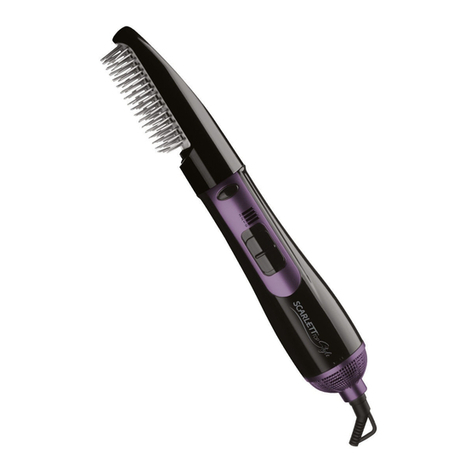
Scarlett
Scarlett TopStyle SC-HAS7400 instructions
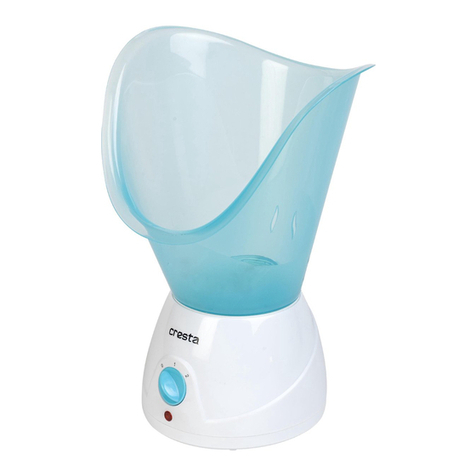
Cresta
Cresta KTS 320 instruction manual
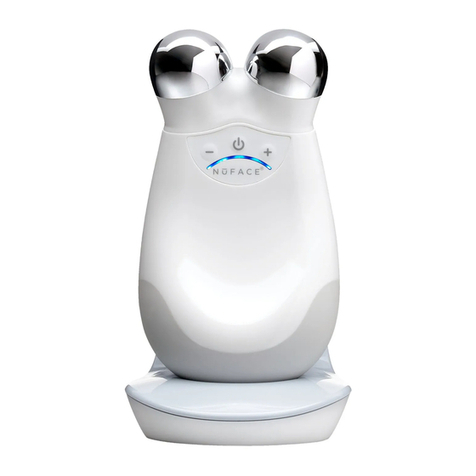
Nuface
Nuface trinity user manual

Collagenius
Collagenius EMS Facial Toner with LED Light Therapy user manual
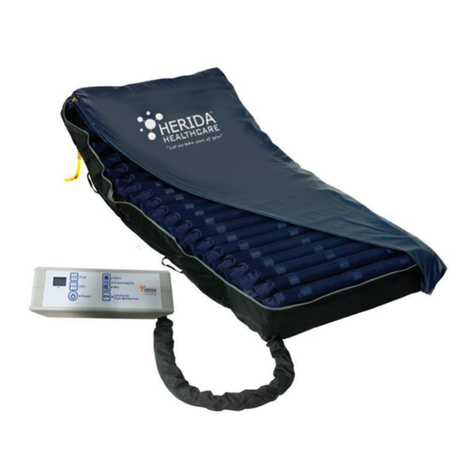
Herida Healthcare
Herida Healthcare Lothian II HH/T06 User & Full Service Manual
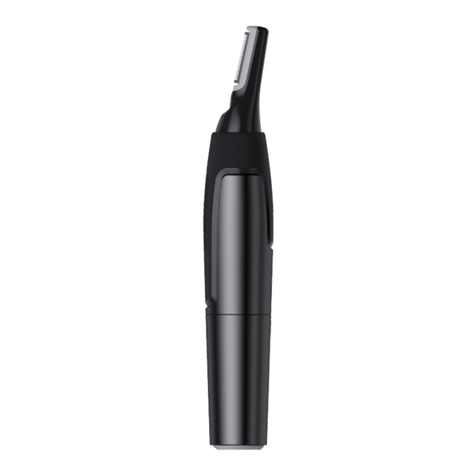
MicroTouch
MicroTouch TITANIUM MAX Instructions for use
